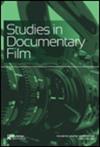Biogeochemical response of a secondary-salinised floodplain wetland to experimental freshening
IF 0.8
4区 综合性期刊
Q3 MULTIDISCIPLINARY SCIENCES
Transactions of the Royal Society of South Australia
Pub Date : 2018-11-20
DOI:10.1080/03721426.2018.1546423
引用次数: 0
Abstract
ABSTRACT An experimental flooding with freshwater was used to evaluate the biogeochemical impacts of freshening in a semi-arid floodplain wetland that had undergone severe secondary salinisation (Loveday Disposal Basin, Australia). Filling the wetland with freshwater lowered electrical conductivity (EC) from ~60 to 13 dS m–1. This freshening was accompanied by substantial declines in total P (TP), filterable reactive P (FRP), dissolved organic C (DOC), total organic N (TON), dissolved organic N (DON), NH4+ and molybdenum-reactive Si (MoR Si) concentrations. Owing to the semiarid climate, the water level receded and EC increased to pre-flooding conditions within seven months. During this drying phase, some chemical species maintained lower concentrations then pre-flooding (TP and FRP), others returned to within their original range (DOC, TON, DON), and others went above their original range (NH4+ and MoR Si), the latter reflecting some bank discharge of groundwater. Unexpectedly low turbidity and P concentrations during the drying phase were promoted by the development of an extensive filamentous algal mat following flooding, which limited sediment resuspension as the water level receded. The transient response to freshening highlights that salinity is a key driver of biogeochemical cycles in semi-arid wetlands.二次盐渍化漫滩湿地生物地球化学对实验更新的响应
摘要:在澳大利亚Loveday处置盆地(Loveday Disposal Basin)进行了一项淡水实验,以评估在经历了严重次生盐渍化的半干旱洪泛平原湿地进行淡水淡化对生物地球化学的影响。用淡水填充湿地可使湿地电导率(EC)从~60降到13 dS - m-1。与此同时,总磷(TP)、可过滤活性磷(FRP)、溶解有机碳(DOC)、总有机氮(TON)、溶解有机氮(DON)、NH4+和钼活性硅(MoR Si)浓度大幅下降。由于半干旱气候,水位下降,EC在7个月内上升到洪水前的水平。在此干燥阶段,一些化学物质(TP和FRP)的浓度低于预淹前的水平,另一些化学物质(DOC、TON、DON)的浓度恢复到原来的范围内,而另一些化学物质(NH4+和MoR Si)的浓度则高于原来的范围,后者反映了地下水的一些河岸排放。出乎意料的低浊度和P浓度在干燥阶段是由于洪水后广泛的丝状藻垫的发展而促进的,这限制了水位下降时沉积物的再悬浮。盐度是半干旱湿地生物地球化学循环的关键驱动因素。
本文章由计算机程序翻译,如有差异,请以英文原文为准。
求助全文
约1分钟内获得全文
求助全文
来源期刊
CiteScore
1.40
自引率
12.50%
发文量
17
审稿时长
>12 weeks
期刊介绍:
Published since 1880, the Transactions of the Royal Society of South Australia is a multidisciplinary journal that aims to publish high quality, peer-reviewed papers of particular relevance to Australasia.
There is a particular focus on natural history topics such as: botany, zoology, geology, geomorphology, palaeontology, meteorology, geophysics, biophysics, soil science and environmental science, and environmental health. However, the journal is not restricted to these fields, with papers concerning epidemiology, ethnology, anthropology, linguistics, and the history of science and exploration also welcomed.
Submissions are welcome from all authors, and membership of the Royal Society of South Australia is not required.
The following types of manuscripts are welcome: Reviews, Original Research Papers, History of Science and Exploration, Brief Communications, Obituaries.

 求助内容:
求助内容: 应助结果提醒方式:
应助结果提醒方式:


